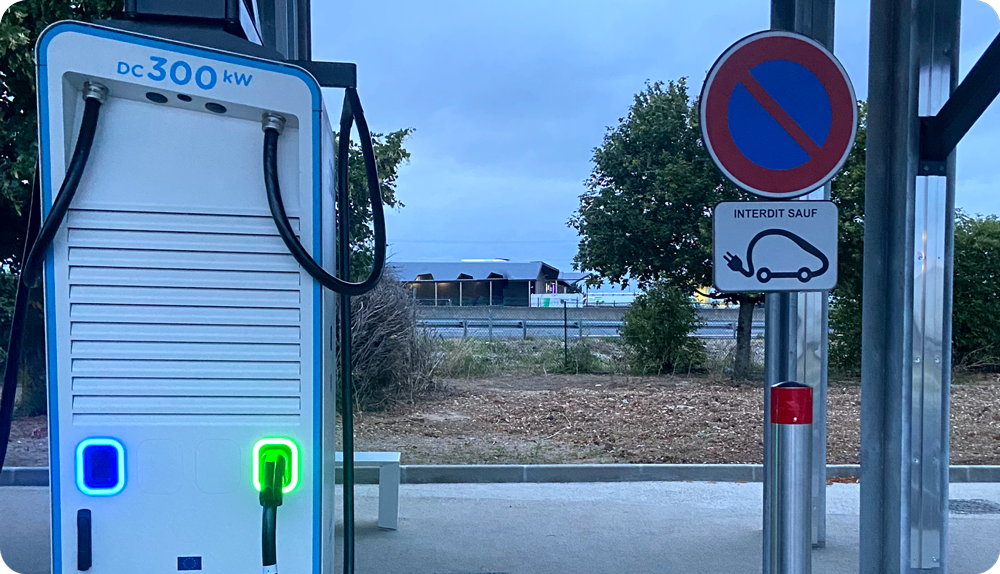Due to the increasing popularity of electric mobility, the industry has been focusing on developing technologies and standards in order to simplify electric vehicle charging. For instance, standards such as CHAdeMO and Combo, also called CCS for Combined Charging System, stand out by offering fast-charging solutions. However, one question remains. Why aren’t there any universal adaptors so that vehicles can connect to both types of sockets?
Deciphering CHAdeMO and Combo standards
Before exploring the underlying reasons for the absence of universal adaptors, understanding the founding principles of these two standards is paramount. CHAdeMO was designed by Japanese companies and was initially conceived for electric vehicles, for makes such as Nissan and Mitsubishi. Equipped with a distinctive connector, this standard also integrates bidirectional communication that can supply electricity to the grid (this feature is also known as V2G or “Vehicle-to-Grid”).

Several well-known makes of electric vehicles are compatible with the CHAdeMO fast-charging standard. These makes notably include:
- Nissan with the Nissan LEAF, which is often equipped with a CHAdeMO fast-charging standard
- Mitsubishi electric vehicles, such as the i-MiEV, are generally equipped with CHAdeMO sockets.
- Certain Kia models, like the Soul EV, are compatible with CHAdeMO.
- Models such as the Peugeot iOn electric car can be charged quickly with CHAdeMO sockets.
- The Citroën C-Zero, a small electric car, is also compatible with the CHAdeMO standard.
These makes have adopted the CHAdeMO standard to offer a fast-charging option to their electric vehicle owners that reduces charging times for longer journeys. It is noteworthy that the adoption of charging standards can vary according to vehicle models and manufacture years. Therefore, the specific compatibility of each model should always be checked.
Combo or CCS stems from the collaboration between European and American car manufacturers. The Combo merges a DC charging socket with an AC charging socket, offering a multipurpose solution, which is largely adopted in Europe and the United States. This standard is designed to support higher power levels than CHAdeMO.

Although many recent electric vehicles are designed to be compatible with the CCS Combo standard, this is not a universal rule for all vehicles.
In many markets, particularly in Europe, an increasing number of car manufacturers are integrating Combo CCS sockets into their electric vehicles to take advantage of fast charging. This is mainly due to the ability of Combo CCS to support higher power levels than other charging standards, enabling faster charging times.
However, there are always exceptions. Some electric vehicles may be designed to work exclusively with other charging standards, such as CHAdeMO or region-specific charging standards. In addition, it is noteworthy that the adoption of standards can vary according to the policies and strategies of each car manufacturer.
If you are interested in a particular electric vehicle, you should read the model's technical specifications and charging details to determine whether it is compatible with the Combo CCS standard, which is the most widespread in Europe.
Combo CCS dominance in Europe
In France, Combo CCS is the most commonly used type of charging point. Combo CCS is widely adopted in Europe, including France, because of its ability to support high power levels for fast charging electric vehicles.

The network of charging stations in France is largely equipped with Combo CCS plugs. As a result, owners of electric vehicles that are compatible with this standard can benefit from faster charging times when on the move.

Chargemap App
Although CHAdeMO charging points are not as widespread in France as Combo CCS points, they can still be found, particularly in older charging stations or in certain specific locations. However, the trend in Europe, including France, is towards the use of Combo CCS due to its versatility and ability to meet the fast-charging needs of modern electric vehicles.
The challenges of universality. Why is an adaptor missing?
The idea of a universal adaptor for the CHAdeMO and Combo standards may seem appealing, but a number of obstacles make it complex, if not difficult to achieve:
> Technical differences
Apart from the connectors’ shape difference, CHAdeMO and Combo standards diverge in terms of electrical specifications and charging management systems. Manufacturing an adaptor that can deal with these differences would be technically difficult.
> The risk of reduced performance
Adaptors can often lead to a loss of efficiency. Adapting from one standard to another could result in a drop in charging power, thus delaying the process. Adaptors require careful design in terms of safety, especially when it comes to high-current charging. Safety standards and regulations can vary from one region to the other, so designing a universal adaptor, which is compliant with all these standards is challenging.
> Evolving standards
Evolving standards Standards evolve over time to adapt to new technological advances. Introducing a universal adaptor could generate compatibility problems as standards evolve.
To sum up, CHAdeMO and Combo CCS sockets provide access to fast charging due to high security and high performance technologies. The CHAdeMO socket is found mainly on Asian and older generation vehicles. The Combo CCS socket is becoming more widespread in Europe, where there are mainly Combo CSS fast-charging stations. However, fast charging is not available for all electric vehicles, in which case a standard AC charging cable would be necessary. Although a universal adaptor for the CHAdeMO and Combo standards may seem convenient, the technical disparities, performance and safety issues, development costs and constantly evolving standards make it difficult to design. The automotive and electric mobility industries are focusing more on expanding charging networks that comply with their respective standards, in order to provide optimal charging solutions for their vehicles and facilitate the transition to more sustainable electric mobility.




J’espère vraiment qu’un jour un adaptateur CCS → Chademo arrive sur le marché. Comme cela plus de souci d’attente devant la seule borne Chademo de la station, plus serein en sachant que même si la borne ne marche pas d’autres seront fonctionnels. Et également plus besoin d’ajouter des bornes Chademo pour les stations donc plus simples à déployer et entretenir.
En sachant que Tesla a déjà fait un adaptateur Chademo vers CCS, donc ce doit être possible dans l’autre sens.
Leave a comment